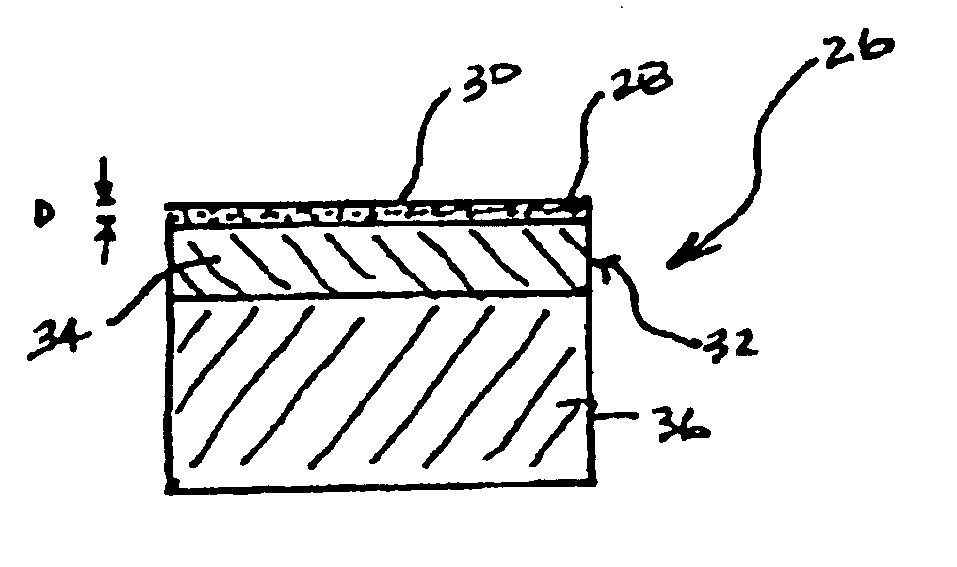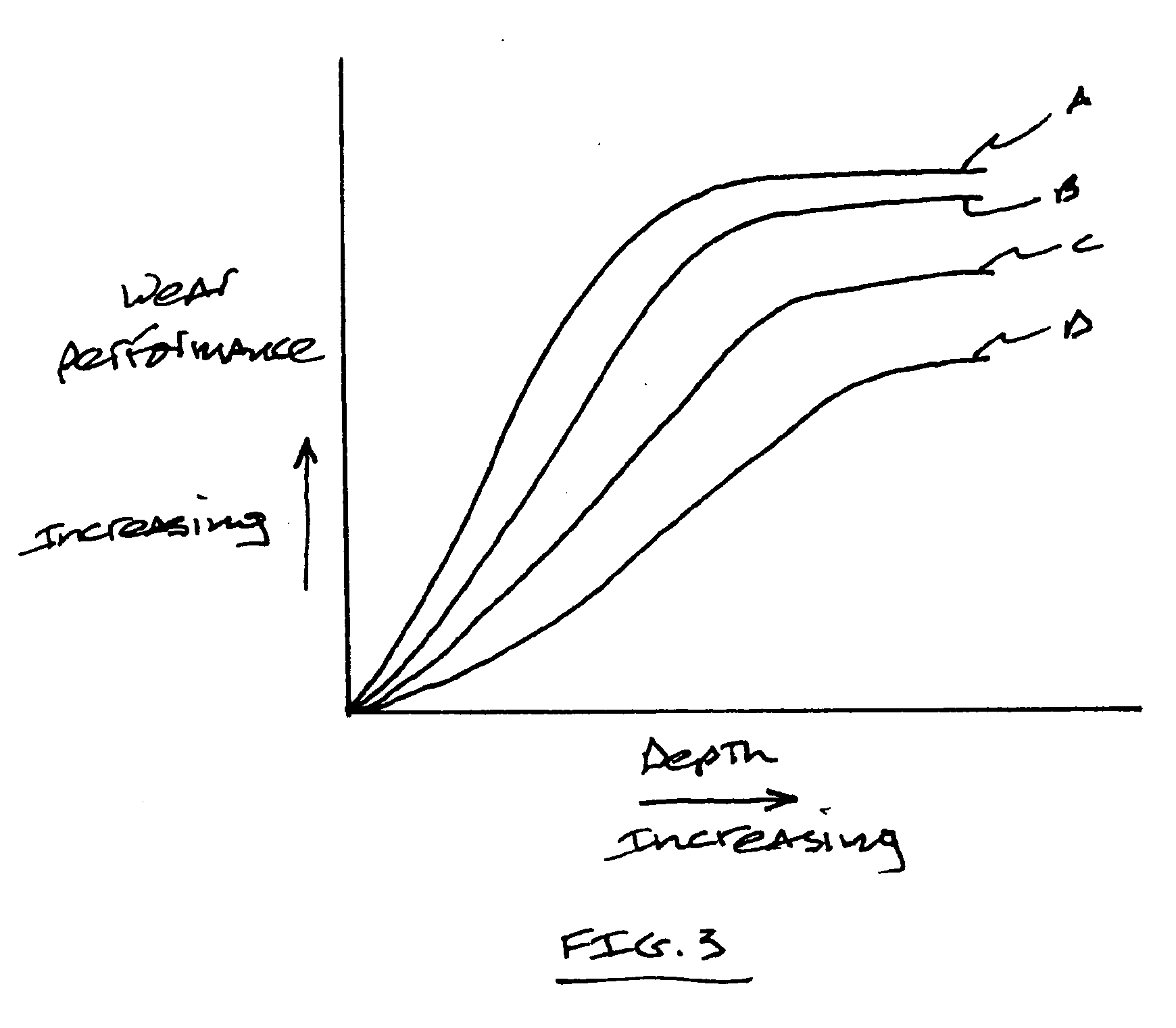Polycrystalline diamond materials having improved abrasion resistance, thermal stability and impact resistance
a technology of polycrystalline diamonds and diamonds, which is applied in the field of polycrystalline diamond constructions, can solve the problems of reducing the hardness and corresponding wear limiting the flexibility of being able to provide pcd materials having desired levels, and reducing the toughness and impact resistance of pcd materials, so as to improve the properties of wear and abrasion resistance and thermal stability. , the effect of improving the hardness
- Summary
- Abstract
- Description
- Claims
- Application Information
AI Technical Summary
Benefits of technology
Problems solved by technology
Method used
Image
Examples
example 1
PCD Compact Formed from a Bimodal Diamond Grain Distribution
[0082] A PCD compact is formed from the PCD material of this invention in the following manner. Coarse-sized diamond grains having a bimodal distribution comprising a first population of diamond grains having an average grain size of about 40 μm, and a second population of diamond grains having an average grain size of about 75 μm are mixed together with Co powder having an approximate grain size of about 2 μm. The distribution of diamond grains and Co powder is as follows: approximately 80 percent by volume 40 μm diamond grains, and approximately 20 percent by volume 75 μm diamond grains. The mixture comprises approximately 95 percent by volume diamond grains and the remaining amount Co. The mixture is prepared for forming a PCD compact useful as a cutting element on a subterranean drill bit.
[0083] The mixture is loaded into a suitable container or capsule and is positioned adjacent a desired substrate useful for forming...
example 2
PCD Compact Formed from a Trimodal Diamond Grain Distribution
[0085] A PCD compact is formed from the PCD material of this invention in the following manner. A distribution of diamond particles having an average particle size of 0.06 mm, 0.03 mm, and 0.01 mm are mixed together in the ratio of 5:3:1. The mixed together diamond powder is heated to a temperature of approximately 1,450° C. in a vacuum for 1 hour to achieve a desired degree of graphitization. The graphitized diamond grain mixture is combined with a volume of Co and Ni powder, the total amount of these powders not exceeding 7 percent by volume. The resulting mixture is loaded into a suitable container or capsule and is positioned adjacent a WC—Co substrate. The container is loaded into a suitable HP / HT device, used for producing conventional PCD constructions, and the device is operated at a temperature and pressure sufficient to cause the mixture to be consolidated, sintered and integrally bonded with the substrate.
[008...
example 3
PCD Compact Formed from a Quadmodal Diamond Grain Distribution
[0087] A PCD compact is formed from the PCD material of this invention in the following manner. A distribution of diamond particles having an average particle size of 0.1 mm, 0.05 mm, 0.02 mm and 5 μm to 0.21 μm are mixed together in the ratio of 5:3:1:1. The mixed together diamond powder is heated to a temperature of approximately 1,400° C. in a vacuum for 30 minutes to achieve a desired degree of graphitization. The graphitized diamond grain mixture is combined with a volume of Co powder not exceeding 7 percent by volume, and the resulting mixture is loaded into a suitable container or capsule and is positioned adjacent a WC—Co substrate. The container is loaded into a suitable HP / HT device, used for producing conventional PCD constructions, and the device is operated at a temperature and pressure sufficient to cause the mixture to be consolidated, sintered and integrally bonded with the substrate.
[0088] The container...
PUM
 Login to View More
Login to View More Abstract
Description
Claims
Application Information
 Login to View More
Login to View More - R&D
- Intellectual Property
- Life Sciences
- Materials
- Tech Scout
- Unparalleled Data Quality
- Higher Quality Content
- 60% Fewer Hallucinations
Browse by: Latest US Patents, China's latest patents, Technical Efficacy Thesaurus, Application Domain, Technology Topic, Popular Technical Reports.
© 2025 PatSnap. All rights reserved.Legal|Privacy policy|Modern Slavery Act Transparency Statement|Sitemap|About US| Contact US: help@patsnap.com



